I’ve stood at the foot of plenty of castles—Scottish, French, Spanish—you name it. But nothing really prepared me for that first slow walk up to Prague Castle. I’d been in the city a couple days, already taken by the maze of old streets and the clatter of trams, but seeing the castle rising above the river… that’s something different. It’s hard to describe how big the place actually feels. Every guidebook talks about “the largest ancient castle in the world,” but the facts can’t touch what it’s like to glance up and realize just how much history is stacked stone by stone above your head.
I remember pausing halfway up the hill, a bit out of breath, watching as the early sunlight hit the castle’s spires and the rooftops below. A handful of other visitors hovered nearby, chatting in a swirl of languages. Someone’s little girl was asking about the guards in funny hats; a street musician tuned his violin in the shadow of the walls. Oddly enough, it wasn’t the grandeur that hit me first. It was the quiet details—pigeons scattering from the cobblestones, the worn handrails, the smell of roasting coffee from a nearby café.
That morning, I decided not to rush. Instead, I let myself wander, ducking into open doorways, following whatever caught my eye. Prague Castle isn’t a single building—it’s a living puzzle, a whole village within walls, and you can sense stories in every corner if you’re paying attention. If you’ve ever wanted to feel time shift under your feet, this is the place. And here’s what I learned—plus how to make your own visit something special, not just another box to tick off.

Quick Facts: Prague Castle at a Glance
📍 Location: Hradčany, Prague, Czech Republic
🏗️ Built: Founded around 870 AD; expanded over centuries
🏰 Architectural Styles: Romanesque, Gothic, Renaissance, Baroque, Modern
🎭 Known For / Highlights: St. Vitus Cathedral, Old Royal Palace, Golden Lane, Changing of the Guard, Crown Jewels
👑 Famous Residents: Czech kings, Holy Roman Emperors, Habsburg monarchs, Presidents of Czechoslovakia and Czech Republic
🏆 UNESCO Status: Yes, part of the Historic Centre of Prague (since 1992)
🌐 Official Website: www.hrad.cz

History of Prague Castle
Trying to sum up the history of Prague Castle is a bit like trying to squeeze a river into a bottle—no matter how much you pour in, something always escapes. The castle has been standing, in one form or another, for over eleven centuries. Its story begins around 870 AD, when Prince Bořivoj of the Přemyslid dynasty ordered the construction of a fortified settlement on the rocky outcrop above the Vltava River. In those early years, it was less a fairytale fortress and more a wooden palisade and church, with fields and scattered dwellings tumbling down the hillside.
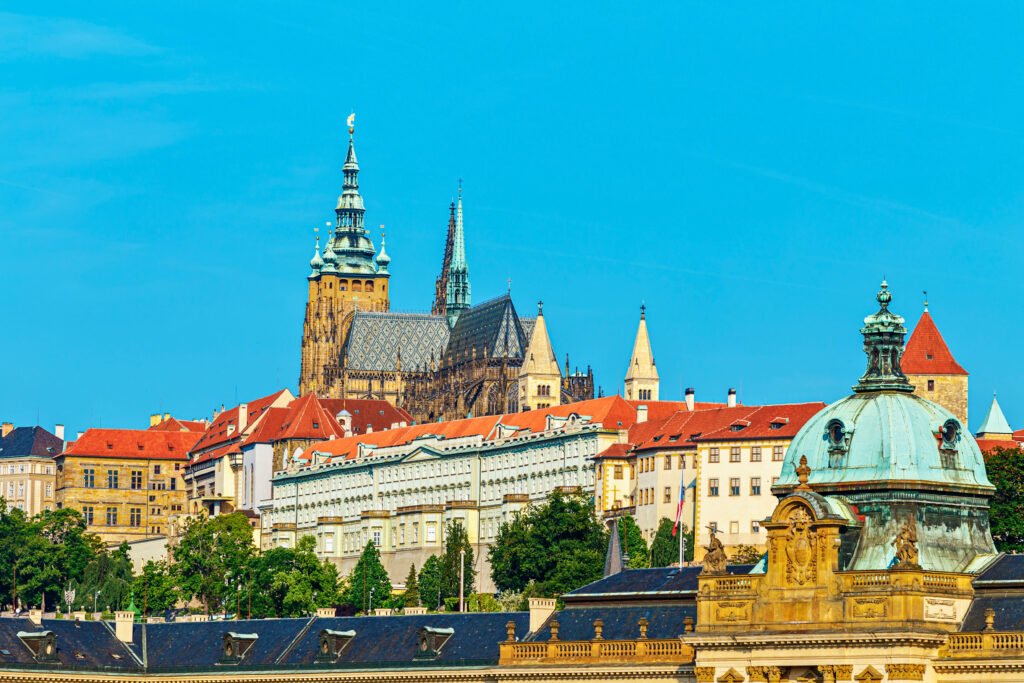
What happened next reads like a greatest-hits album of Central European history. The castle became the seat of Czech rulers and, later, the crowning place of kings and emperors. By the time the Romanesque Basilica of St. George and the first stone palace appeared in the 10th and 11th centuries, the complex had already started to sprawl. But it was Charles IV in the 14th century—arguably Prague’s most famous king—who left a mark that’s still visible today. Charles kicked off the construction of St. Vitus Cathedral, aiming to give Prague a spiritual heart as grand as any in Europe. His vision was ambitious: a castle worthy of the Holy Roman Emperor.
Of course, progress came in fits and starts. Fires, invasions, and political squabbles left their scars. In the 15th century, the Hussite Wars brought chaos, and sections of the castle were badly damaged. Later, the Habsburgs arrived and brought a taste for Renaissance style, transforming Gothic interiors into grand ceremonial halls. Rudolph II, another legendary ruler, turned Prague Castle into a center for science, alchemy, and the arts. His reign was wild and a little eccentric—think secret laboratories, exotic animals, and court astronomers gazing at the stars.
Over centuries, the castle absorbed each new ruler’s tastes. Baroque facades appeared alongside Gothic arches; gardens and galleries multiplied. The castle even served as a barracks and suffered neglect during some tough 19th-century years. But the twentieth century brought new significance. After World War I, Prague Castle became the seat of the Czechoslovak president, a role it still holds for the Czech Republic today.
Walking through the courtyards now, it’s easy to forget how much change and turmoil these stones have witnessed. But if you pause and look closely—at a patch of medieval masonry, a faded coat of arms, a battered iron gate—you can almost feel the weight of centuries pressing in. The past here isn’t dead; it’s layered under your feet, quietly shaping every moment you spend within these walls.

Legends & Myths
You can’t walk around Prague Castle for long before bumping into a legend or two. My favorite? The Dalibor Tower. Some Prague locals claim that, on a quiet night, you might catch the sound of a violin floating from the tower windows. The backstory is almost too sad to be made up: a knight named Dalibor was locked away there in the 15th century. He supposedly learned to play the violin in his cell to ease the loneliness. When the music finally stopped, people in the city understood what had happened. Whether you believe in ghostly melodies or not, it’s the kind of tale that sticks with you on a late-night stroll.
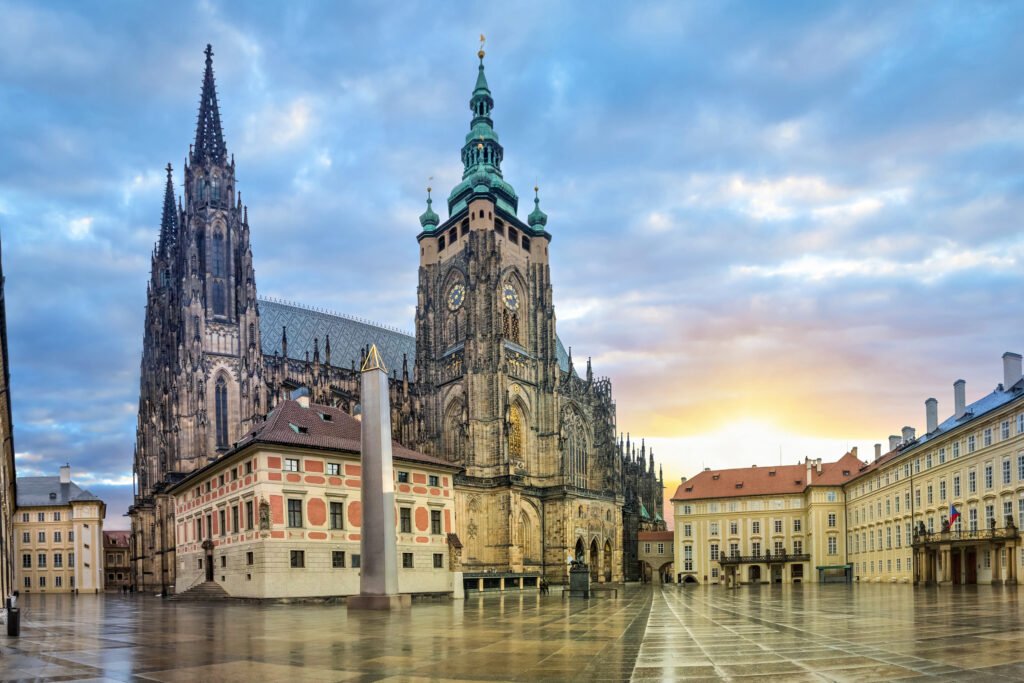
There’s also the story of Princess Libuše—the city’s legendary founder. According to old folklore, she stood on this very hill and predicted that Prague would grow into a city “whose fame would reach the stars.” I heard that quote for the first time from a street guide in the castle gardens. He said it with such pride that, honestly, it felt true, even if it’s just a story passed down for centuries.
Then there’s Golden Lane. Walk through at dusk, and it’s not hard to picture alchemists hunched over mysterious vials, hoping for a miracle. Locals love to say the spirits of those old dreamers haven’t quite left. Real or not, it adds another layer to the castle—a place where fact and legend have always shared the same address.

Architecture & Design
Walking through Prague Castle, it’s hard not to feel as if you’re drifting from one century into another. The place is less a single fortress and more a sprawling city-within-a-city, shaped and reshaped by every era it’s survived. The architecture isn’t just varied—it’s a living, evolving patchwork, where a Gothic spire might rise behind a Renaissance arcade, and cobbled lanes weave past pastel Baroque facades.
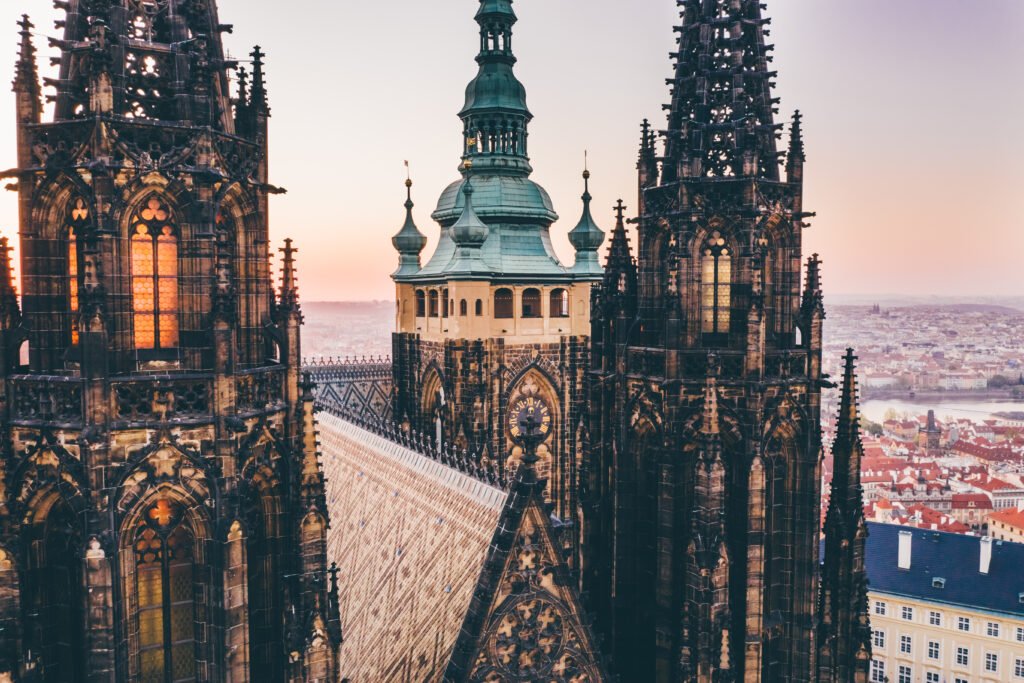
If you enter from the main gate, the first impression is pure grandeur: the guardhouses, the ornate Schwarzenberg Palace on your left, and that broad first courtyard where you’re more likely to hear the shuffling of tour groups than the clank of armor. Yet, as soon as you wander deeper, the layers start to reveal themselves. In the second courtyard, you’ll find the bright white Spanish Hall and the grand Assembly Hall, both stamped with Habsburg ambition. Some visitors hurry through these spaces, but I’ve found lingering here lets you soak up the drama in the architectural details—stuccoed ceilings, golden trim, and the odd faded fresco.
And then there’s St. Vitus Cathedral. No photo does it justice. Its Gothic towers dominate the skyline, and the stained glass inside throws rainbows across the flagstone floor. The scale of the place can be intimidating—vaulted ceilings soaring overhead, saints gazing down from hidden corners. But look for the quiet details: an Art Nouveau window designed by Alfons Mucha, centuries-old tombs, even worn grooves in the stone steps where generations have climbed.
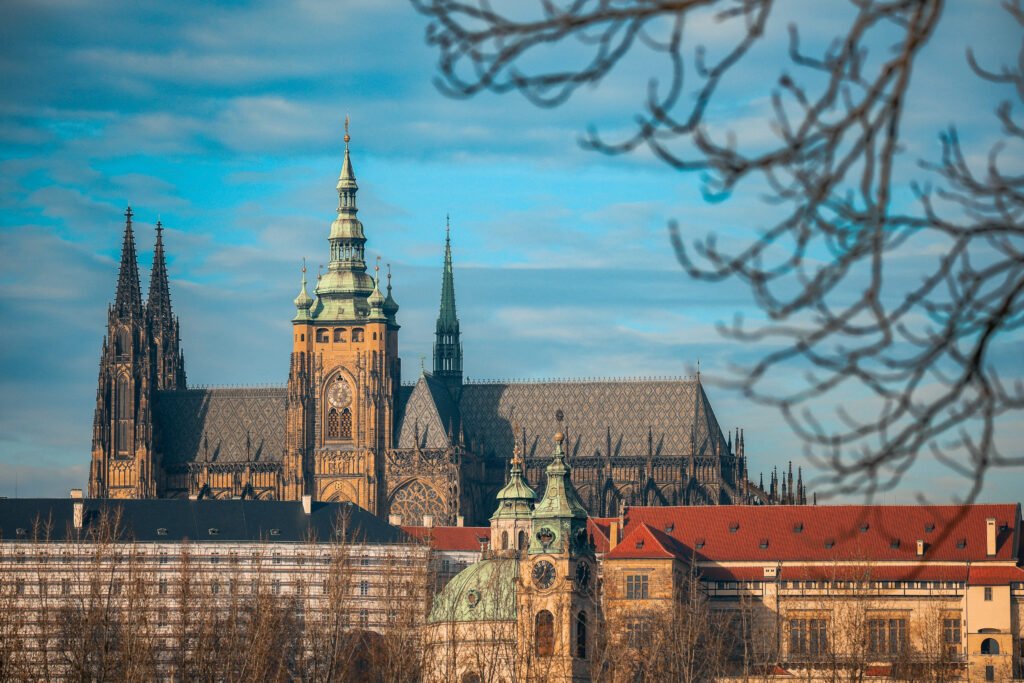
The Old Royal Palace feels more restrained, but the Vladislav Hall—a space so vast it once hosted jousting tournaments indoors—is a jaw-dropper. If you time it right and slip in during a quiet moment, you might catch a shaft of light breaking through the tall windows, illuminating the herringbone floor. Those little moments, I’ve found, linger longer than the grandest chamber.
Don’t skip Golden Lane, a street of tiny, brightly painted houses pressed up against the inner wall. Once home to goldsmiths and castle marksmen, later to writers and dreamers (Franz Kafka lived here for a while), it feels like a fairytale in miniature. Even the fortifications—massive, brooding, and unmistakably medieval—serve as a reminder that the castle wasn’t always about pageantry and ceremony.
Prague Castle’s architecture is the city’s timeline rendered in stone and mortar. Every addition, every restoration, tells a story about who held power, what they feared, and what they wanted to leave behind. For anyone curious enough to slow down and look, it’s all right there—etched into the walls, arches, and courtyards, waiting to be read.
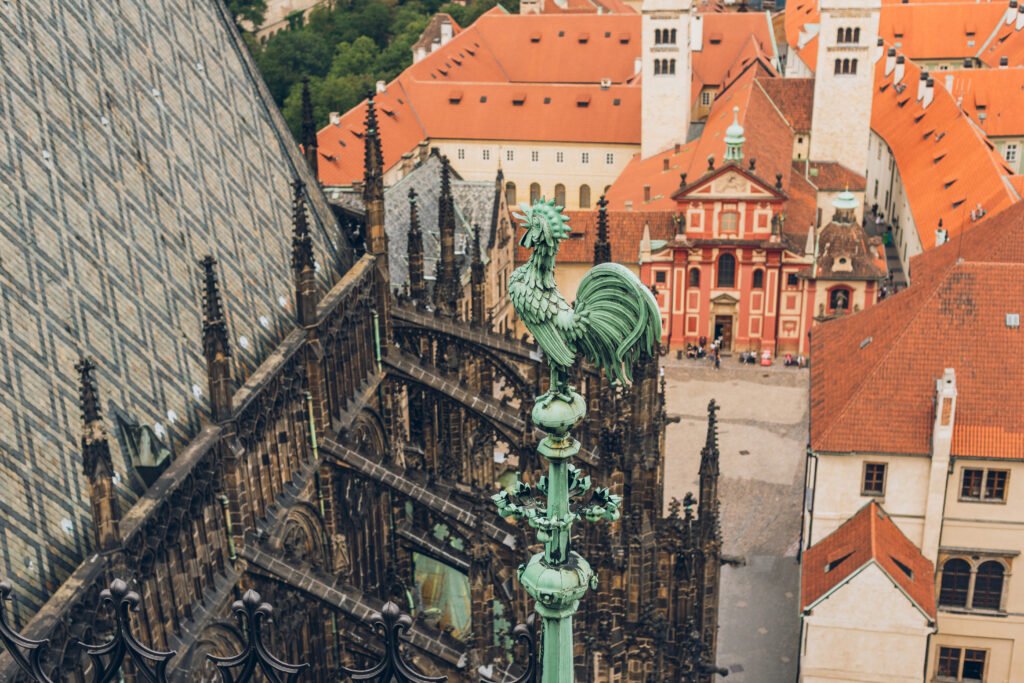

Best Things to See Inside Prague Castle
Trying to decide what to see first at Prague Castle is a bit like being handed the keys to a treasure chest and told to pick just one gem. You could easily spend a full day exploring and still leave feeling like you’ve missed a corner or two. But if you want to get the most out of your visit—especially if time is tight—these are the spots I’d circle on any map.
St. Vitus Cathedral is the beating heart of the castle. Even if you’ve seen your share of churches, nothing prepares you for the size and intensity of this Gothic masterpiece. The stained glass windows—especially the one by Alfons Mucha—glow with color in the morning sun. Take a slow walk around the nave and pause by the tomb of St. Wenceslas, the country’s beloved patron saint. If you’re feeling ambitious, climb the tower for a panoramic sweep of Prague’s rooftops.
Just next door is the Old Royal Palace. On a quiet morning, I once wandered through the Vladislav Hall almost alone. The high, arched ceilings are reason enough to linger, but history buffs will appreciate the old Diet chamber and the story behind the Defenestration of Prague (yes, that infamous tossing-out-the-window moment happened here).
Golden Lane looks almost too cute to be real—tiny, colorful houses crammed along the wall. In the past, goldsmiths, castle guards, and even Kafka himself lived here. Today, each house tells a different story: an alchemist’s shop, a tiny armory, a humble writer’s nook. Go early or late to dodge the crowds and catch a bit of that old-world quiet.
St. George’s Basilica is easy to overlook, but step inside and you’ll find a stark, Romanesque interior and some of the oldest walls in the city. The acoustics are amazing—if you’re lucky enough to catch a concert here, don’t miss it.
Don’t skip the castle gardens and lookout points. South Gardens open in the warmer months, and the views across the city are worth every step. For a peaceful break, slip away to the Royal Garden or Lobkowicz Palace, which houses a fascinating private collection and a charming café terrace.
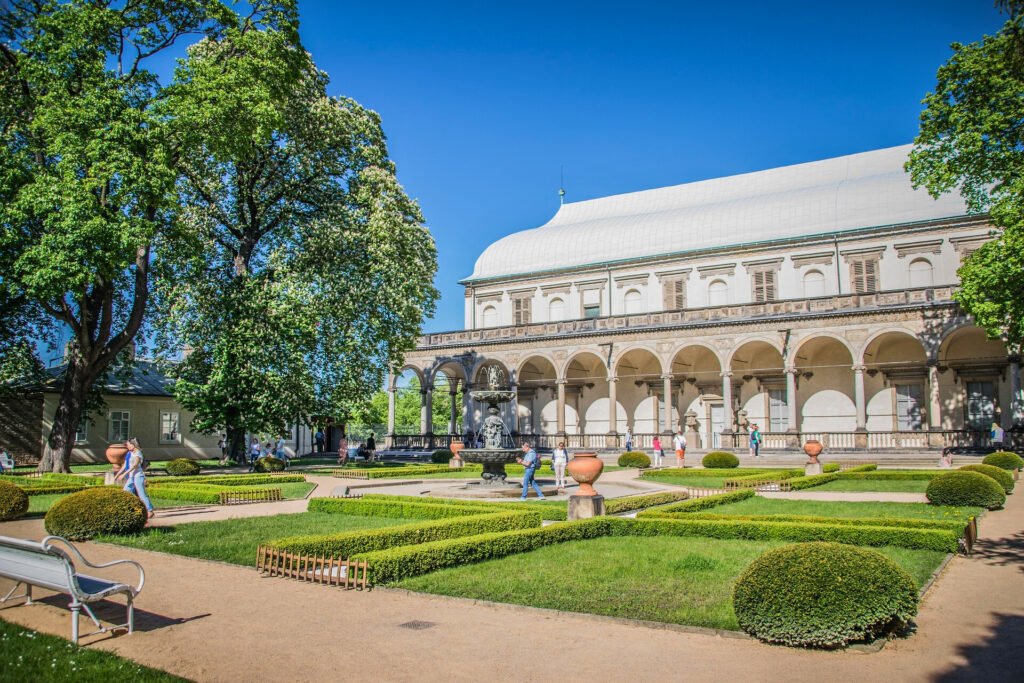
Every visit feels a little different, but here’s my best advice: linger, get a bit lost, and let the castle surprise you. The main sights are famous for a reason, but some of the real magic hides in the quiet corners and lesser-known doorways.

Practical Visitor Information
Planning a visit to Prague Castle isn’t rocket science, but a little know-how makes the experience a lot smoother—and a lot more enjoyable. Here’s what I’ve learned, sometimes the hard way.
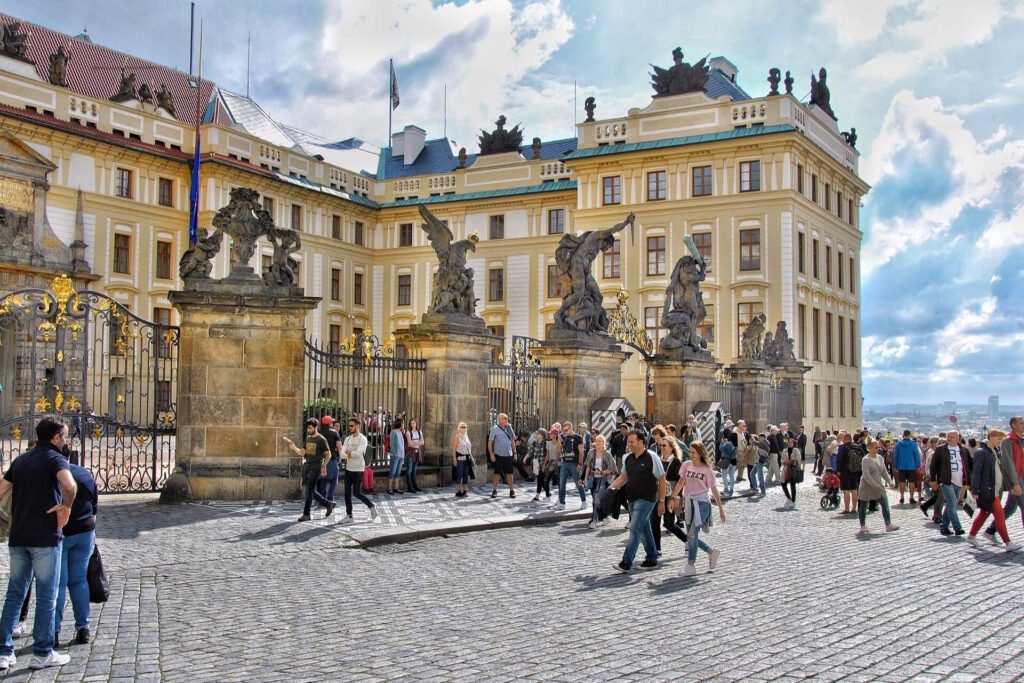
Opening Hours:
The castle complex is generally open every day, but hours shift with the seasons. From April through October, the main sites—like St. Vitus Cathedral, the Old Royal Palace, and Golden Lane—are usually open from 9:00 am to 5:00 pm. In the winter months (November to March), closing time comes an hour earlier, at 4:00 pm. The castle grounds themselves open earlier and close later, but the big attractions stick to these core hours. It’s always smart to double-check the official website just before your visit, as special events can change things at short notice.
Ticket Types & Prices:
You don’t need a ticket to stroll the outer courtyards, but for the cathedral, palace, and Golden Lane, you’ll want a “Circuit” ticket. There are a few options: Circuit A covers just about everything, while Circuit B offers a slightly trimmed experience for a bit less. Prices hover around 450 CZK for adults, with discounts for students, children, and families. Guided tours cost extra but are worth it if you love context. Save yourself a queue and buy tickets online when you can. Check the official site for the most up-to-date visiting information.
How to Book:
You can buy tickets at the castle itself (the lines can be long, especially late morning), or online through the official site or trusted resellers. I’ve done both; online is my go-to, especially in peak season.
Security & Entry:
Expect airport-style security at all main entrances. Backpacks are allowed, but big luggage isn’t, and there’s usually a quick bag check. Give yourself an extra 10–20 minutes to get through the gates during busy times.
Accessibility:
Most main areas are wheelchair accessible, though some historic rooms and Golden Lane can be tricky with steps and cobbles. Staff are helpful and there are accessible toilets—just ask.
Best Times to Visit:
Weekday mornings are your friend if you want to avoid the biggest crowds. Spring and fall mean lighter foot traffic and less heat. Holidays and weekends? Brace yourself for lines.
Photography:
Snapping photos is allowed in most places, but flash and tripods are a no-go. Always check for signs—rules can shift, especially during events.
How Long to Stay:
Give yourself at least 2–3 hours to take in the essentials. If you want to explore the gardens or every nook and cranny, half a day is easy to fill.

How to Get There
Getting to Prague Castle isn’t complicated, but the route you pick can shape your first impression. If you’re staying anywhere near the historic center, my favorite approach is simply to walk—cross Charles Bridge, meander through the twisting lanes of Malá Strana, and then make the steady climb up the Old Castle Steps (Staré zámecké schody). It’s a workout, sure, but the changing views of red rooftops and church towers more than make up for it.
If you’d rather skip the hike, Prague’s tram system is reliable and easy. Tram 22 is the classic choice—hop off at Pražský hrad or Pohořelec, depending on which end of the castle you want to start from. Both stops are a short walk from the gates and save you a lot of uphill effort.
Taxis and ride-shares can drop you at the top, but traffic in the old town can be slow. There’s limited parking nearby, so I wouldn’t recommend driving unless you have to. Public transit is inexpensive, safe, and, honestly, part of the Prague experience.

Local Tips & Hidden Gems
If you want to experience the castle like a local—or just crave a quiet moment away from the tour groups—start early or late in the day. Early mornings, especially midweek, let you wander nearly empty courtyards with just the occasional gardener for company. On my last trip, I ducked into the South Gardens just after they opened and enjoyed the city views in near silence.
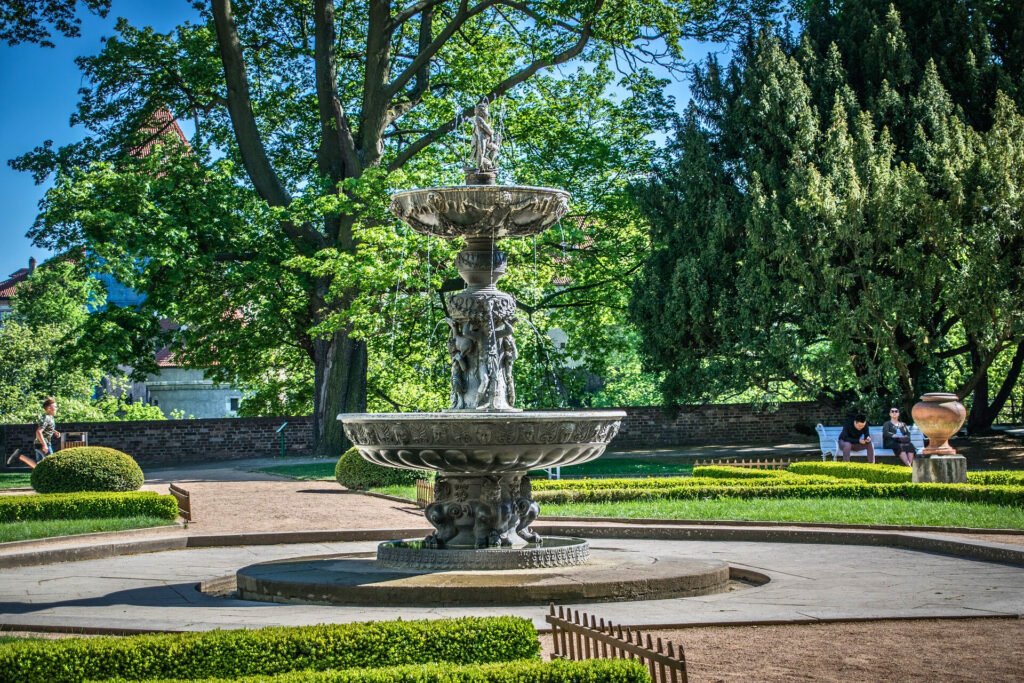
Don’t skip the tiny Chapel of the Holy Cross in the second courtyard. It’s easy to miss, but the interior’s simplicity and flickering candles are a welcome pause from the grandeur outside. For a quirky detour, pop into the Story of Prague Castle exhibition (in the Old Royal Palace basement). Few tourists bother, but the artifacts and models bring the place’s history down to earth.
Hungry? The Lobkowicz Palace Café has a terrace perfect for coffee with a view, while the casual U Černého vola pub just outside the castle walls is a favorite for hearty Czech fare. Sometimes the best memories come not from the “must-sees,” but from these smaller discoveries that make the castle feel personal.

Suggested Itineraries
Half-Day Visit:
If you’re pressed for time, focus on the essentials. Start with St. Vitus Cathedral—go early to beat the biggest crowds and see the morning light through the stained glass. From there, stroll through the Old Royal Palace and Vladislav Hall. Take a quick pass through Golden Lane (it’s best early or late), then walk the ramparts for city views. If you still have energy, peek into St. George’s Basilica before grabbing a coffee or pastry in one of the nearby cafés. You’ll hit the highlights without feeling rushed.
Full-Day Deep Dive:
Take your time and explore at a slower pace. Start with the cathedral, but linger over the details: tombs, chapels, and that famous Mucha window. Next, move to the Story of Prague Castle exhibit for context, then enjoy the Old Royal Palace and the Defenestration windows. Break for lunch—Lobkowicz Palace Café is a solid choice with a view. In the afternoon, meander along Golden Lane, pop into the toy museum, and see the armory. Wander the castle gardens, especially if it’s spring or summer. If you like art or music, check for temporary exhibitions or concerts in the evening.
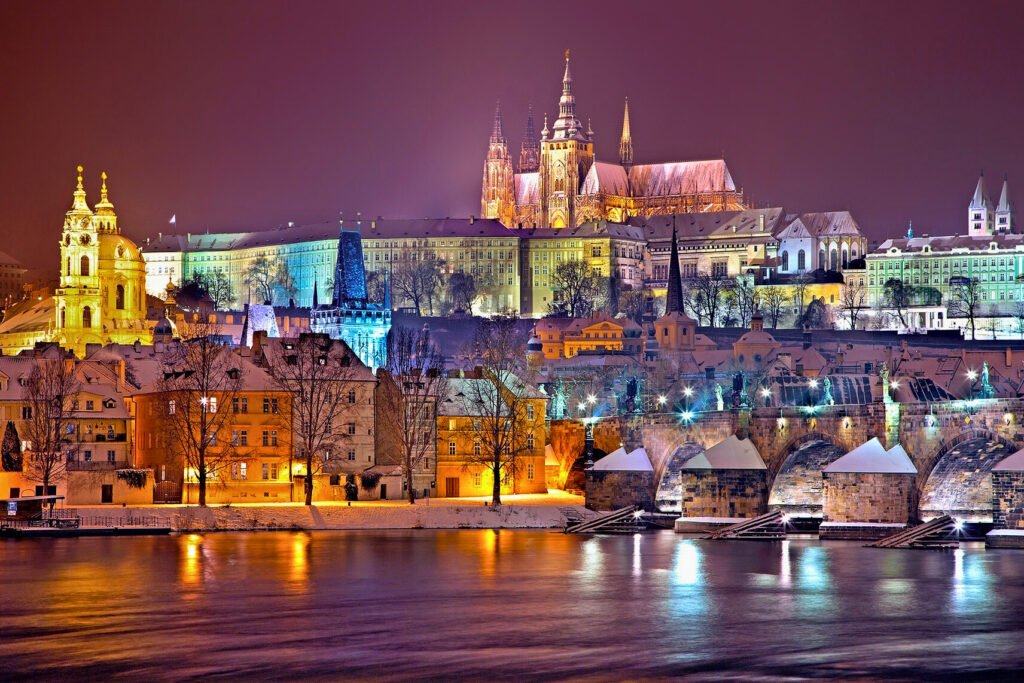
Weekend or Longer:
If you have a couple of days, use Prague Castle as your anchor and branch out into nearby neighborhoods. Spend an extra hour in the gardens, visit the Strahov Monastery (with its incredible library), and take time for a beer in Malá Strana. Catch a concert in St. George’s Basilica or explore the palace’s less-touristed corners. Having more time lets you find your own pace and discover some of the magic that most people miss.

Nearby Attractions & Day Trips
One of the best things about visiting Prague Castle is how many other gems are just a short stroll or tram ride away. If you leave the castle by the eastern gate, you’ll find yourself steps from Charles Bridge, the iconic stone span lined with statues. Crossing it, especially early in the morning or as the sun sets, is a classic Prague experience.
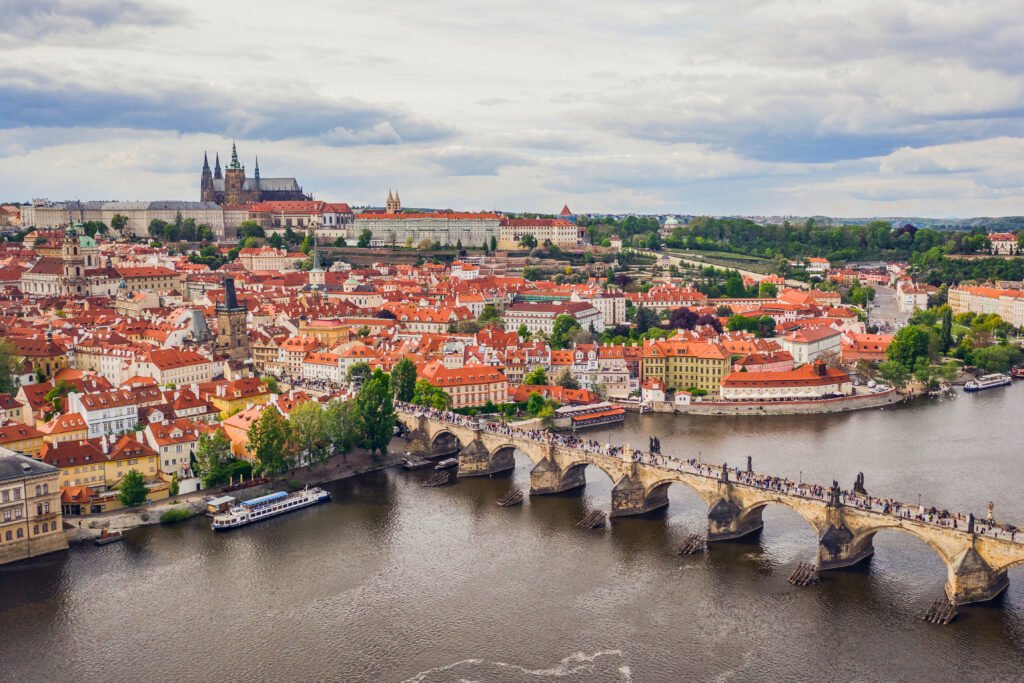
Just below the castle, the neighborhood of Malá Strana is all crooked lanes, Baroque facades, and hidden gardens. It’s the perfect place to wander without a plan—duck into a church, discover a tucked-away café, or just sit on a bench and watch the world go by.
Strahov Monastery sits atop the hill just to the west of the castle. It’s home to one of the most beautiful libraries you’ll ever see (think floor-to-ceiling books and ornate painted ceilings), and their brewery pours some seriously good beer.
If you’re up for a walk, head to Petřín Hill—a green oasis with winding paths, rose gardens, and a lookout tower that’s often called Prague’s “mini Eiffel Tower.” On a clear day, you’ll get sweeping views back toward the castle and the whole city below.
Finally, if you want a deeper dive into Czech history, Loreta is a pilgrimage site filled with art, legends, and the cheerful sound of its chimes. Any of these can be combined with a castle visit, rounding out your day with some of Prague’s most memorable sights.

Prague Castle FAQ
How long should I plan for a visit?
At least 2–3 hours for the main sights, but half a day lets you take things at a comfortable pace and see more of the gardens or museums.
Do I need to book tickets in advance?
Not always, but it’s smart during busy seasons (spring, summer, holidays). Online booking saves time and avoids the main queue.
Are guided tours worth it?
If you love stories and context, absolutely. Guides add color you won’t get from info boards, and some can take you into less-accessible areas.
Is the castle accessible for wheelchairs and strollers?
Most main routes and attractions are accessible, though some older areas (Golden Lane, certain stairs) are a challenge. Staff are helpful—ask if you need assistance.
Can I take photos inside?
Photography is allowed in most areas, but not everywhere—look for the signs. Flash and tripods are usually prohibited inside historic interiors.
What’s the best way to get there?
Tram 22 drops you close to the gates, or you can walk up from Malá Strana or the Old Town for some of the city’s best views.
When is the Changing of the Guard?
You’ll catch the main ceremony daily at noon in the first courtyard, but the guards change hourly in smaller ceremonies throughout the day.
Is there anywhere to eat inside?
Yes—there are cafés inside the castle grounds and more options just outside the gates in Malá Strana or Hradčany.

Final Thoughts
Leaving Prague Castle, I always catch myself turning around for one last glance. Maybe it’s the sunlight hitting the cathedral roof, or just the strange mix of silence and city noise floating up from below. Last spring, I ended up sitting on a low wall by the gardens, splitting a pastry with a friend and listening to an elderly couple argue about directions. It struck me then—this place isn’t just history on display. It’s alive, in big and small ways.
Everyone seems to take away something different from a visit. For me, it’s the hidden staircases, the chipped stone balustrades, and those accidental moments you can’t plan for—like running into a choir rehearsal in St. George’s Basilica or hearing the noon bell echo down the hill.
If you’ve had your own moment here, I hope you’ll share it. Add a comment 💬, tag us on Instagram (@CastleQuestChronicles) with your photos, or just tell a friend. Prague Castle has room for everyone’s stories, and I’d love to hear yours.
👉 Love exploring iconic European castles? Don’t miss our guides to the majestic Edinburgh Castle in Scotland and the elegant Château de Chambord in France—each with its own captivating story.
📸 And if this article sparked your curiosity about the castles, follow along. We are on Instagram, Pinterest, Facebook, and X, too. More castles (and more stories) are just around the bend. Explore all our castle adventures here!






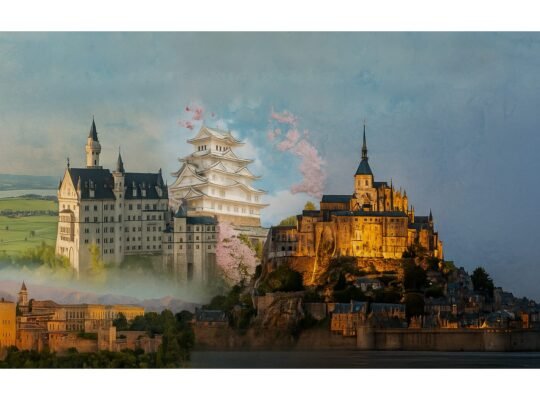
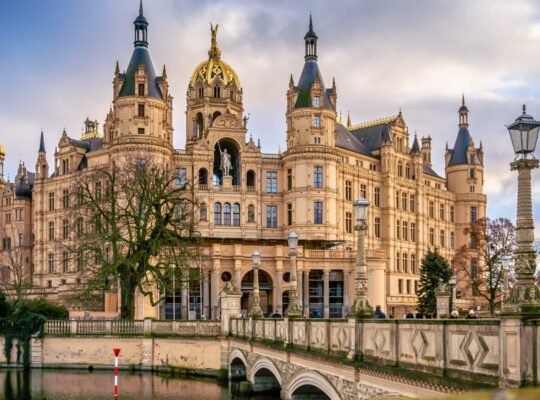
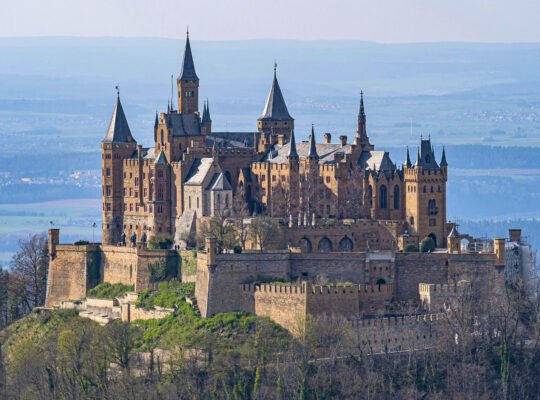
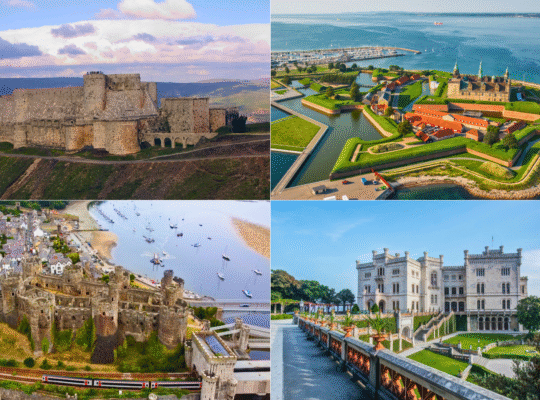
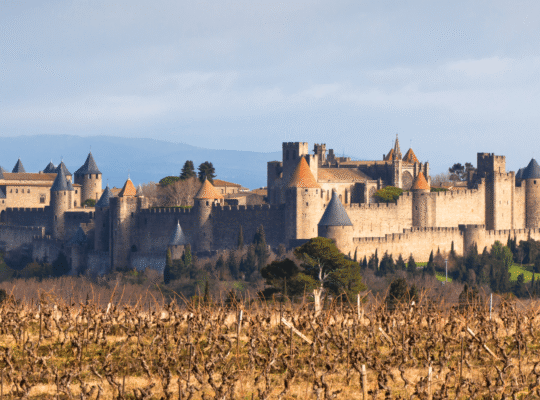
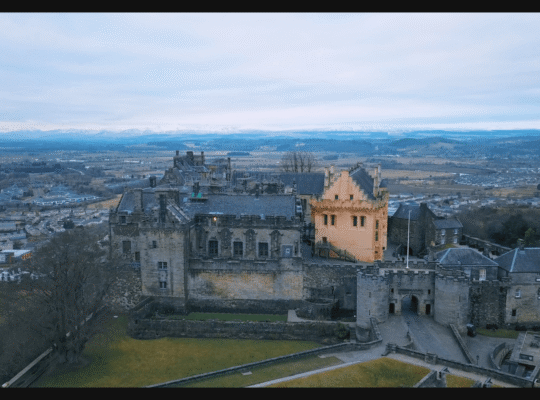
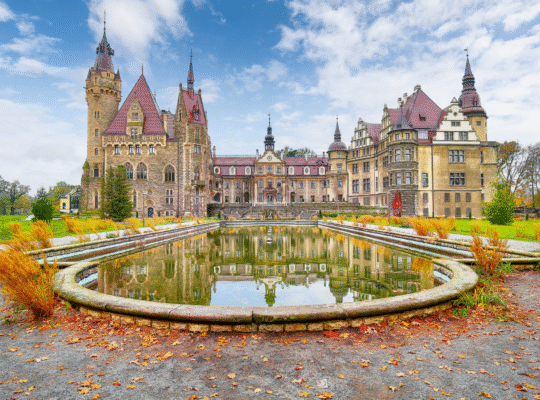
1 Comment